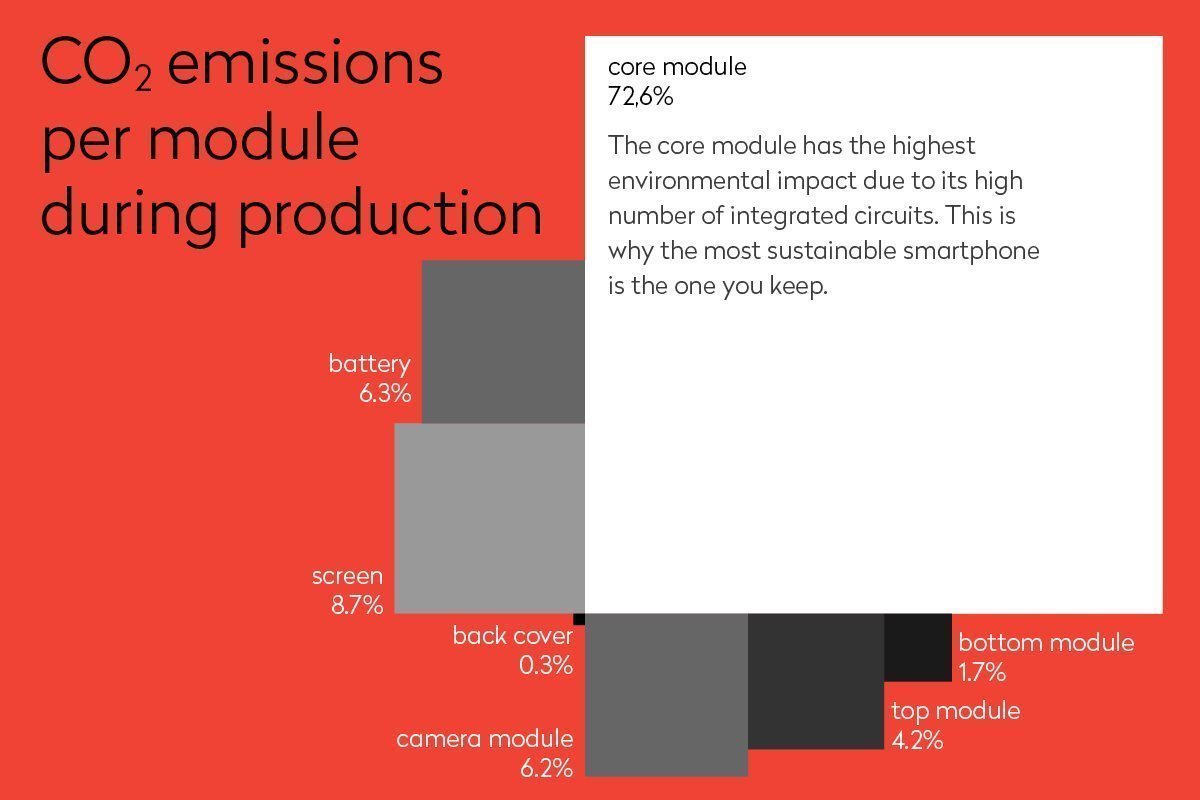True, but most people also don’t take fair working conditions into consideration. Still we would agree that it is better to buy a phone that is produced under fair working conditions. What I’m saying is that even if most people don’t know the difference between Mediatek and Qualcomm, I’d definitely choose the latter over the former.
They took the software development in-house now because their “partners” don’t provide updates to their chipset (=Mediatek doesn’t care about their “partners”). Well Qualcomm also doesn’t care or else Fairphone would not have had to develop Android 7 for the Snapdragon 801 on their own…
I wonder if this is environmentally sustainable. The core module makes up more than 72% of the CO2 emissions of the FP2 production. Isn’t it more sustainable to update the software of a core module than to swap out the entire core module because it is not supported anymore (as Shiftphone does)?

Source: Fairphone Blog